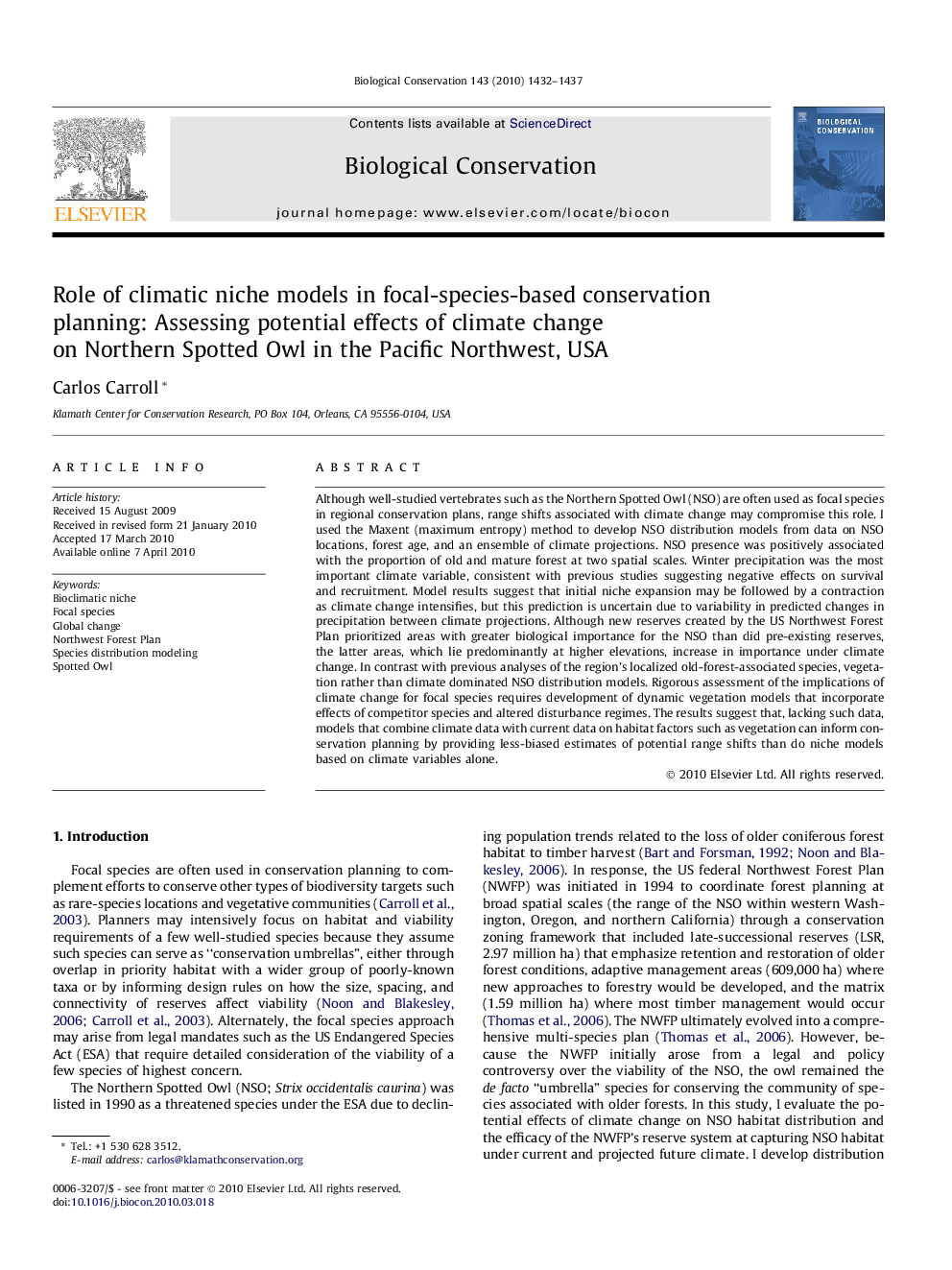| کد مقاله | کد نشریه | سال انتشار | مقاله انگلیسی | نسخه تمام متن |
|---|---|---|---|---|
| 4385578 | 1304543 | 2010 | 6 صفحه PDF | دانلود رایگان |
عنوان انگلیسی مقاله ISI
Role of climatic niche models in focal-species-based conservation planning: Assessing potential effects of climate change on Northern Spotted Owl in the Pacific Northwest, USA
دانلود مقاله + سفارش ترجمه
دانلود مقاله ISI انگلیسی
رایگان برای ایرانیان
کلمات کلیدی
موضوعات مرتبط
علوم زیستی و بیوفناوری
علوم کشاورزی و بیولوژیک
بوم شناسی، تکامل، رفتار و سامانه شناسی
پیش نمایش صفحه اول مقاله

چکیده انگلیسی
Although well-studied vertebrates such as the Northern Spotted Owl (NSO) are often used as focal species in regional conservation plans, range shifts associated with climate change may compromise this role. I used the Maxent (maximum entropy) method to develop NSO distribution models from data on NSO locations, forest age, and an ensemble of climate projections. NSO presence was positively associated with the proportion of old and mature forest at two spatial scales. Winter precipitation was the most important climate variable, consistent with previous studies suggesting negative effects on survival and recruitment. Model results suggest that initial niche expansion may be followed by a contraction as climate change intensifies, but this prediction is uncertain due to variability in predicted changes in precipitation between climate projections. Although new reserves created by the US Northwest Forest Plan prioritized areas with greater biological importance for the NSO than did pre-existing reserves, the latter areas, which lie predominantly at higher elevations, increase in importance under climate change. In contrast with previous analyses of the region's localized old-forest-associated species, vegetation rather than climate dominated NSO distribution models. Rigorous assessment of the implications of climate change for focal species requires development of dynamic vegetation models that incorporate effects of competitor species and altered disturbance regimes. The results suggest that, lacking such data, models that combine climate data with current data on habitat factors such as vegetation can inform conservation planning by providing less-biased estimates of potential range shifts than do niche models based on climate variables alone.
ناشر
Database: Elsevier - ScienceDirect (ساینس دایرکت)
Journal: Biological Conservation - Volume 143, Issue 6, June 2010, Pages 1432-1437
Journal: Biological Conservation - Volume 143, Issue 6, June 2010, Pages 1432-1437
نویسندگان
Carlos Carroll,